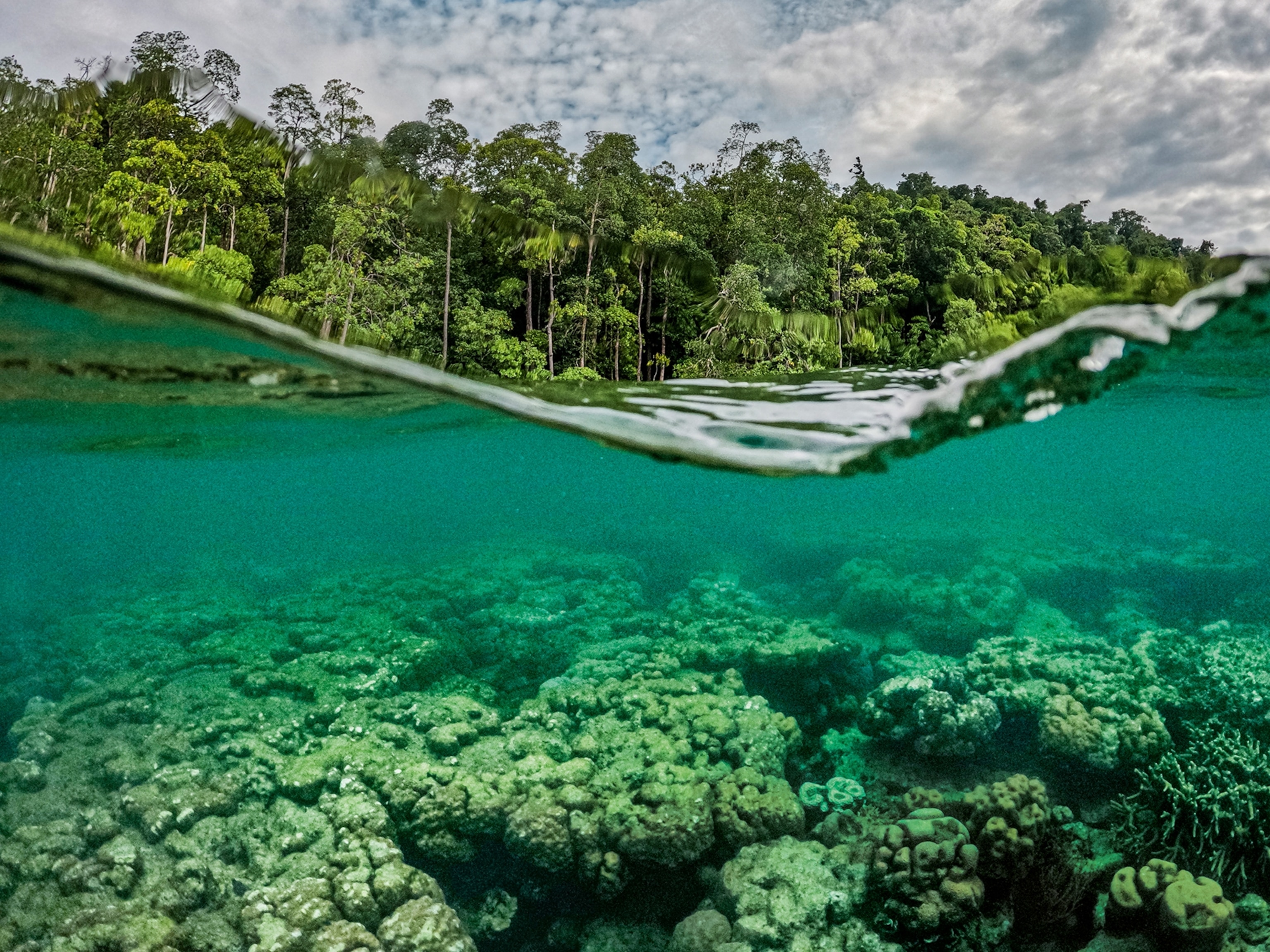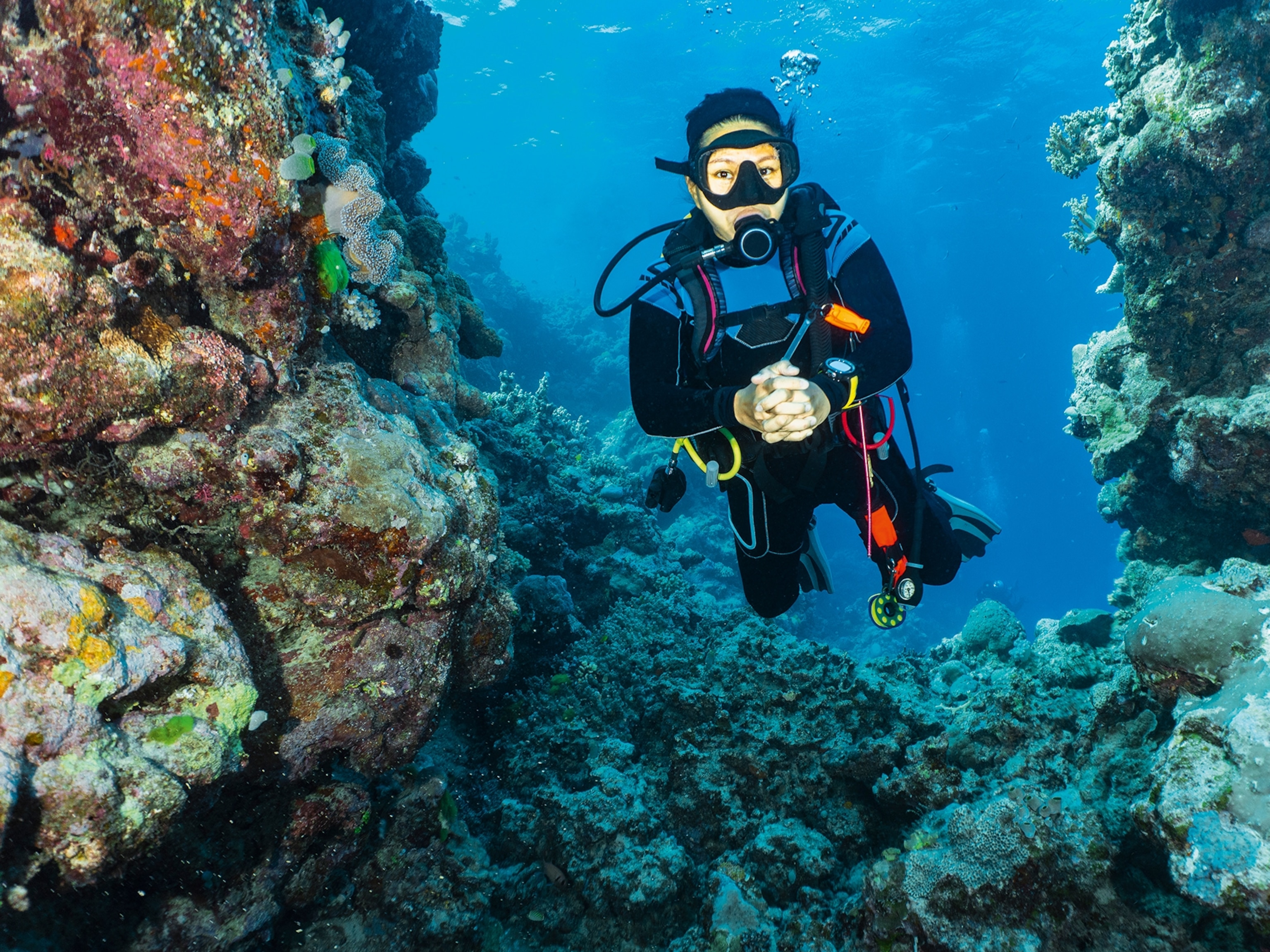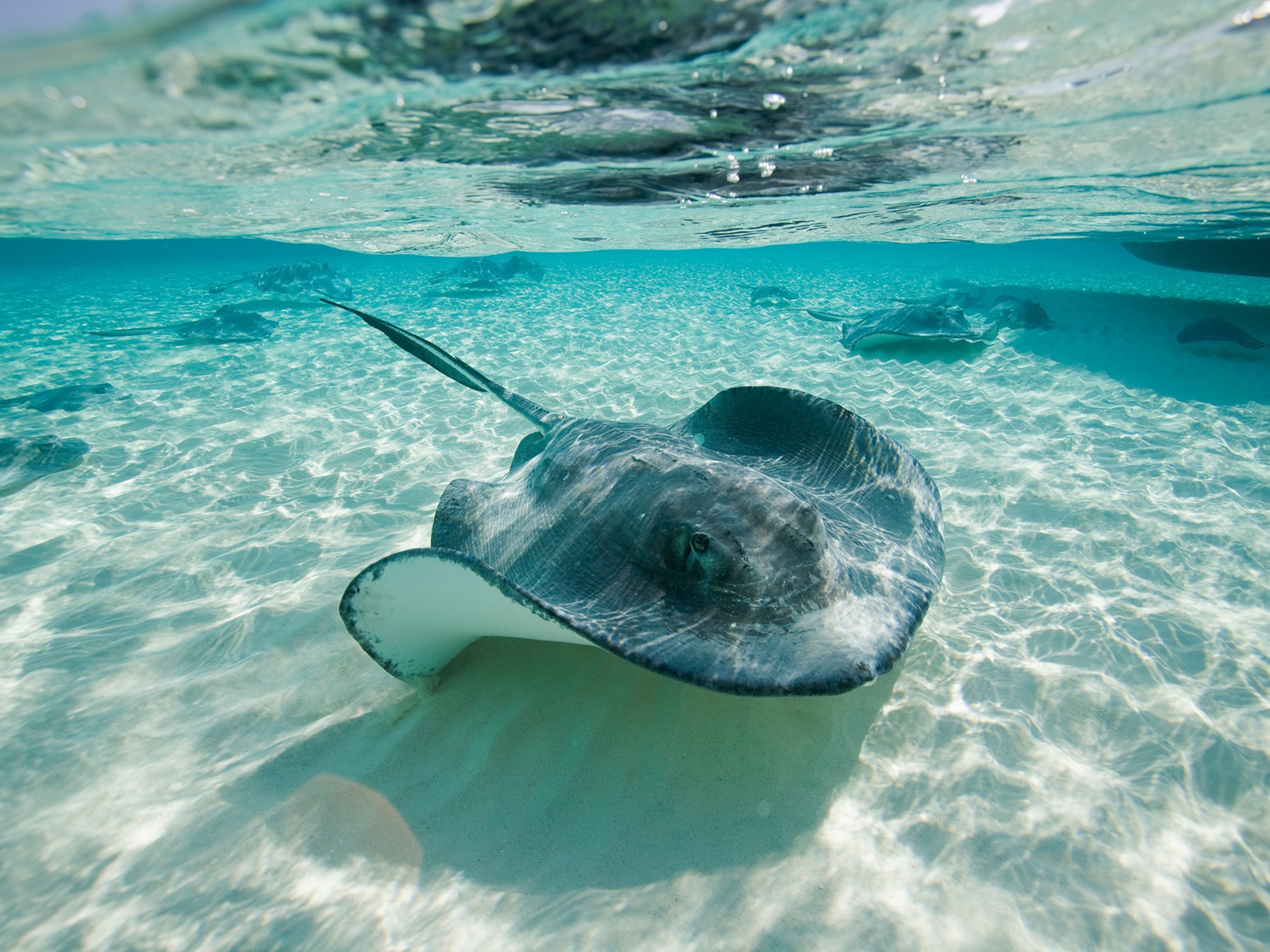
Forget Kokomo. Key Largo is the pristine paradise where you wanna go.
The Florida Keys are home to the world’s third largest living coral reef. Here’s how tourists can explore this vibrant ecosystem, by both land and sea.
Despite its small size, the Florida Keys pack a punch. In this 125-mile-long ribbon of islands stretching from the southern tip of Florida, travelers find some of the United States’ most vibrant natural worlds.
The archipelago is framed by the Florida Reef Tract, North America’s only living coral barrier reef and the third largest in the world. It’s home to more than 45 species of hard coral and 500 species of fish. It’s also essential to the Sunshine State, buffering its shoreline (coral reefs absorb 97 percent of a wave’s energy) and supporting the economy through tourism and fisheries.

Visitors can see this essential yet fragile ecosystem up close in Key Largo, the first link in the island chain. Here, travelers find the Florida Keys National Marine Sanctuary, with its abundance of mangroves and seagrass beds, and John Pennekamp Coral Reef State Park, the first designated undersea park in the United States, established in 1963.
Here’s how to visit this natural stunner above and below the water line.
Key Largo by sea
Located within the Florida Keys National Marine Sanctuary, Molasses Reef teems with fish, turtles, and rays. More than 30 sites in this shallow reef system are suitable for divers and snorkelers of all levels, making it a great introduction into what makes the reef world so special.

In addition to the reef, visitors can explore shipwrecks, though strong currents make these sites better suited for experienced divers and those with deep-dive certification. The purposefully sunk U.S.S. Spiegel Grove is one of the most impressive wrecks. The landing craft stretches more than 510 feet in length and rests at a depth that ranges from 63 feet to 141 feet. Barracuda, moray eels, goliath grouper, and sharks share the site. Between the plethora of marine life and the staggering size of the wreck, you’ll need multiple dives to see it properly.
(This tiny island is the best place to dive in the Caribbean.)
Key Largo by land
The John Pennekamp Coral Reef State Park contains coral reefs, mangroves, and seagrass beds, plus walking trails, all abounding with life. It is a great place to experience the Keys’ coastal ecosystem on land.

The park is named for a Miami newspaper editor who played a significant role in protecting Florida’s natural resources. (His efforts also led to the creation of Everglades National Park.)
As early as 1957, scientists were pushing for the Florida Reef Tract’s protection from further damage. The John Pennekamp Coral Reef State Park was created in recognition of America’s love for outdoor recreation, emphasizing the importance of protecting natural areas for future generations.

The visitors center is a good place to begin, with a list of recent wildlife observations and exhibits on the environment and the park’s history. From there, snorkel trips, scuba diving tours, glass-bottom boat rides, and kayak rentals are available. Wandering a few of the trails, such as the 0.3-mile Wild Tamarind Trail—a forest path canopied by mahogany, gumbo-limbo, do-not-touch poisonwood, and tamarind—offers another perspective on the area. (Tip: The farther into the park you travel, the thinner the crowds.)
How to visit responsibly
When booking a dive guide, look for Blue Star-certified operators. The Blue Star program, established by the Florida Keys National Marine Sanctuary, recognizes responsible operators committed to education. Key Largo’s Rainbow Reef Dive Center has knowledgeable staff and is a great place to start, especially for those new to diving.
(Scientists are trying to save coral reefs. Here’s what’s working.)
Visitors can learn more about how critical coral reefs are at the Coral Restoration Foundation (CRF), the world’s largest coral restoration organization. Since 2007, CRF has planted more than 170,000 corals (primarily endangered elkhorn and staghorn) onto the Florida Reef Tract. The visitors center has a wealth of information and can arrange presentations with advance notice. Snorkelers and scuba divers can join the restoration work for a day, helping outplant corals at one of CRF’s nurseries.





